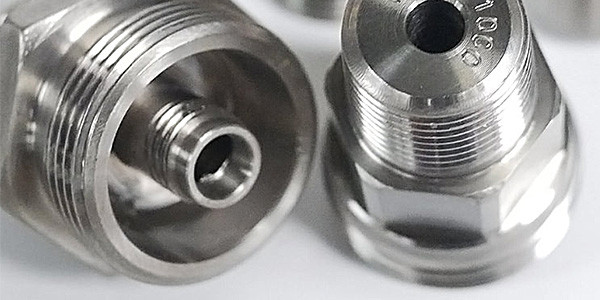CNC Valves

At Jewellok, we take pride in our commitment to engineering excellence. Our CNC valves, meticulously crafted with precision, set industry standards for quality and performance. In this comprehensive article, we will delve into the intricate components of our CNC valves, showcasing the unmatched craftsmanship that sets us apart in the industry.
Our CNC valves are essential components used in a wide range of industrial applications, from controlling gas flow in manufacturing processes to ensuring the safety of gas delivery systems. These valves are meticulously designed and crafted to meet the highest industry standards, making them a preferred choice for businesses worldwide.
1. CNC Valve Body
The heart of our CNC valves is the meticulously engineered valve body. Crafted from high-quality materials, such as stainless steel or brass, our CNC valve bodies are designed to withstand extreme conditions and ensure longevity. The precision CNC machining process guarantees tight tolerances, resulting in a leak-free performance that exceeds industry expectations.
2. Actuation Mechanism
Efficiency and reliability are at the core of our CNC valves. The actuation mechanism is a critical component responsible for opening and closing the valve. Our CNC valves feature various actuation options, including manual handwheels, pneumatic actuators, and electric motors, allowing customers to choose the best fit for their specific needs.
3. Sealing Technology
To ensure a secure and leak-free operation, our CNC valves are equipped with advanced sealing technologies. Whether it’s a high-pressure gas application or a corrosive environment, our sealing solutions provide unmatched performance. We offer a range of sealing materials, including Viton, Teflon, and metal seals, tailored to the requirements of each CNC valve.
4. Flow Control Features
Precise control over gas flow is essential in many industrial processes. Our CNC valves come with a variety of flow control features, such as throttling plugs, precision orifices, and modulating actuators. These features enable users to fine-tune gas flow rates with exceptional accuracy, ensuring optimal performance of CNC valves in various applications.
5. Pressure Rating
Safety is paramount when dealing with gases under high pressure. Jewellok’s CNC valves are designed to meet and exceed stringent safety standards. Our valves are available in various pressure ratings, ensuring compatibility with a wide range of applications, from low-pressure systems to high-pressure industrial processes.
6. Customization Options
We understand that each application is unique. Therefore, we offer extensive customization options for our CNC valves. Whether it’s adapting the valve to specific dimensions, materials, or actuation methods, our team of experts is dedicated to delivering tailored CNC valve solutions that precisely meet your requirements.
Jewellok’s CNC valves are the epitome of precision engineering and quality craftsmanship. With a focus on durability, reliability, and performance, our valves are trusted by industries worldwide.
If you are looking for a dependable solution for your gas control needs, look no further than Jewellok’s CNC valves. Contact us today to discuss your specific requirements, and our team will be delighted to assist you in finding the perfect CNC valve solution for your application.

When it comes to CNC (computer numerical control) machining, valves play a major role in regulating the flow of gases and fluids within different industrial processes. This is why it is so important to design CNC valves that make operations easier and more efficient. It makes a significant contribution to overall precision and productivity.
Understand Operational Requirements
This is the first step in designing such valves. You have to understand in great detail the environment where these valves will function and the possible operational needs over there. This is why you should consider factors such as the kind of gases or fluids being controlled, required flow rates, and pressure levels.
Focus On Simplicity And Ergonomics
Always make sure that the CNC valves you design are user-friendly. Ensure that the controls and interfaces are straightforward and intuitive. Ergonomic considerations are extremely important in this case, too! Make sure that actuators or valve handles can be manipulated and gripped with ease. Provide clear indications regarding the status or position of the valve.
Prioritize Durability And Reliability
Durability is so important in the context of CNC valve design! Thus, always choose construction methods and materials that can withstand potential wear and tear as well as the conditions where they will be operated. Focus on high-quality seals, materials that can resist wear and tear, and robust actuators so that valves last long and perform consistently over time.
Enable Accessibility And Ease Of Maintenance
While designing CNC valves , they can be accessed easily, especially for purposes such as servicing and maintenance. Include features in them to allow swift disassembly, component replacement, and cleaning as and when you need it. Label the parts clearly along with provisioning for simple maintenance procedures to reduce downtime significantly.
Utilize Technology And Automation
Explore the scope of incorporating smart technology, such as automation, wherever you can in such projects. If you integrate sensors, software-controlled systems, and actuators in these valves it will help you streamline operations, provide real-time control and monitoring, and improve accuracy. Automation also lowers the manual workload on operators, thus optimising overall efficiency.
Test Prototypes Rigorously
Before you initiate the full-scale production of CNC valves, test the prototypes as rigorously as possible. Simulate operating conditions to make sure that the valves are functional and durable, and that their performance is aligning with the intended specifications. Incorporate feedback from engineers and operators to refine your design.
Collaborate And Seek Feedback
Collaborate with key entities in this context such as operators, end-users, and engineers across the design process. Gather feedback on usability, potential improvements, and functionality of the products. It always pays to involve people who will work the valves as it improves the products’ design.
Conclusion
In the end, the process of designing CNC valves that make it easy for the operators means taking a holistic approach that focuses on key aspects such as functionality, durability, user-friendliness, and technological advancements. When you prioritize these aspects during the design phase you can create valves that truly fit the bill.